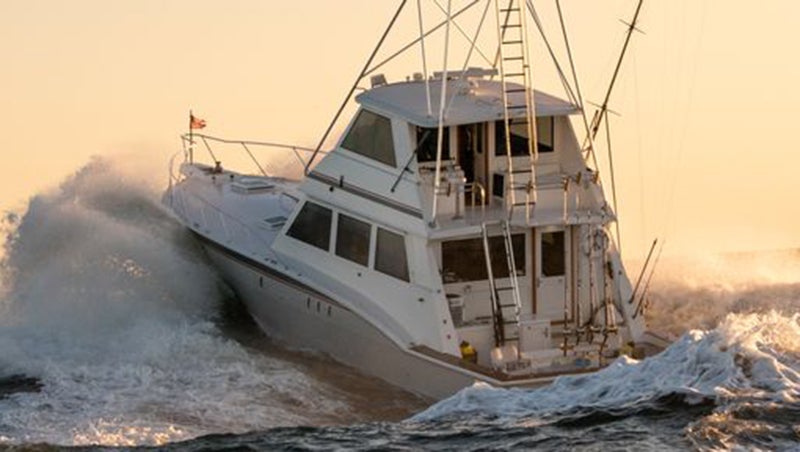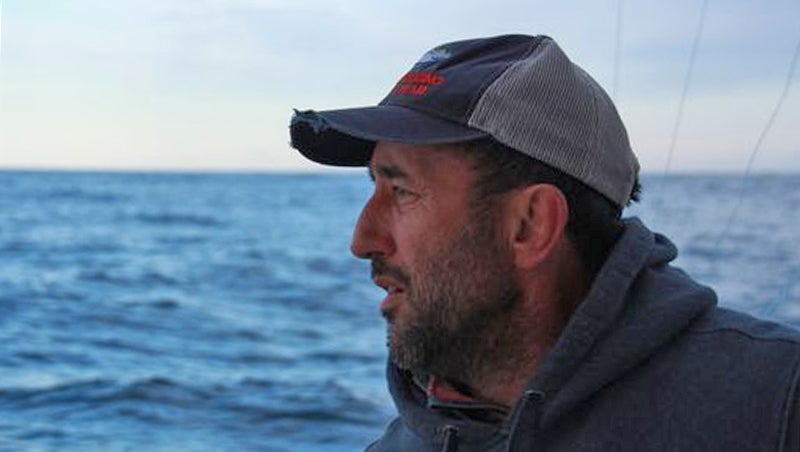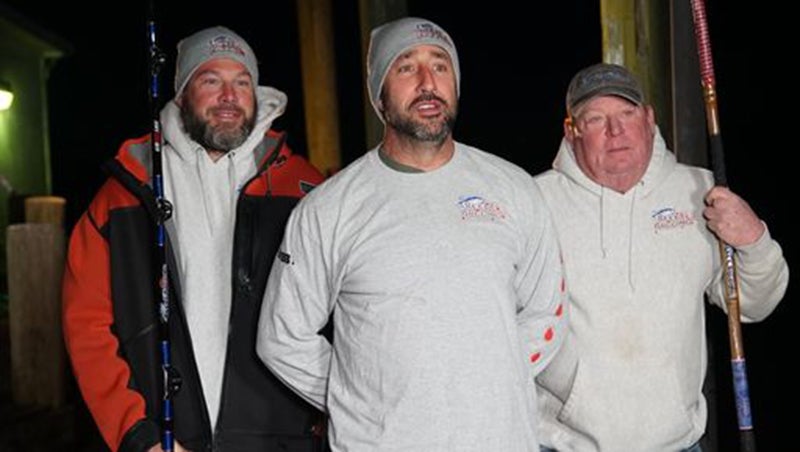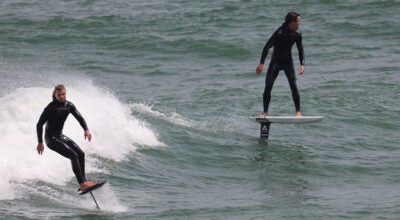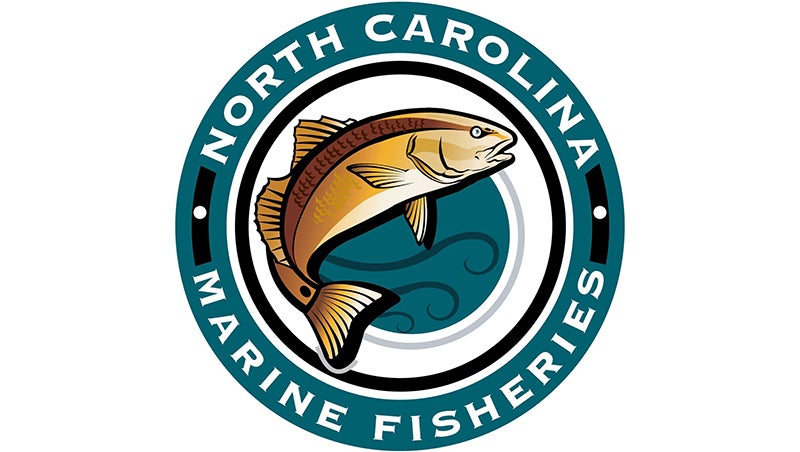‘Wicked Tuna: Outer Banks’ hooks fans for 100 episodes
Published 8:45 am Sunday, November 7, 2021
|
Getting your Trinity Audio player ready...
|
Wicked Tuna: Outer Banks airs its 100th episode Sunday, November 7 at 9 pm on National Geographic. Now in its eighth season, the show chronicles seven boats as they compete to bring in the biggest and best bluefin tuna despite fierce weather and the difficulties of navigating the ever-changing Oregon Inlet.
As of last week, the Doghouse was in the lead with $43,799 in earnings and 11 tuna caught, closely trailed by Fishin’ Frenzy at $43,347 and 10 tuna. Trailing the pack with 8 fish caught and earnings of $38,155 is the new Reel E’ Bugging captained by Bobby Earl from Long Island, New York, back this season after an engine room fire last fall.
But with a single fish bringing in over $4,000, the stakes couldn’t be closer. And, according to Earl, who caught up this week with The Coastland Times, “This season’s ending is as close as it gets. Nobody’s out of it! That’s all I’ll tell you,” he said with a laugh.
With only three episodes left of the season, fishermen have a lot of work to do if they’re going to catch up with last year’s figures. Though the season is open usually through the end of February, biting winds make fishing not only painful, but dangerous and captains are forced to make decisions to stay in and wait for better weather.
For many boats, however, once they’ve made the commitment to leave shore, they’ll stay out until they’ve reeled in a tuna, just because the fuel to get out of the inlet is so expensive. “The reality is, we’re so invested financially, I almost refuse to come back without something,” said Earl, who says he sometimes gets a lot of grief on the show for this reason. “Fuel alone costs me $1100 per trip, compared with $600 last year,” he said.
Reel E’ Bugging is known to pull double overnights waiting on a big fish. A typical day starts just after midnight. The crew meets the cameraman on the 60’ boat at 1:30 a.m. and the boat pushes off at two in the morning. It’s a three or four hour ride through the dark to get into the Oregon Inlet. “We like to be on the fishing routes a half hour before the sun comes up,” Earl said. The best times to fish are sunrise and sunset, so if the crew doesn’t hook a fish in the morning, they’ll take turns sleeping and watching the line, though it’s a good chance they won’t have much action for another 10-12 hours. With a rule that there are always two guys awake, that means short naps and an exhausted but determined crew.
On average, bluefin take about an hour and a half to wrestle on the line before the mates can reel them in, but sometimes that fight can last much longer. Earl recalls a catch that went on eight hours. As the only captain, he alone stays on the controls the whole time, watching the movement of the fish, monitoring the speed of the boat. Contrasted with the physical strength required to reel in the fish, Earl said the emotional stress of maintaining the controls without a break is significant. “As time goes on it’s always in the fish’s favor. That hook makes a tiny hole. Every hour of you pulling, that hole gets bigger. If the line goes slack for four tenths of a second, he’ll shake his head and get away. A tuna can swim 40 mph. Nobody on God’s earth can reel a reel at 40 mph. It’s a dance between . . . the fish and the captain. That’s why it takes the best of the best to catch [so many fish] in the season.”
He added, “This season I lost 22 pounds and probably slept four hours a day. You push, push, push. It’s a marathon. You want to get every fish you can.”
That mentality is what brought him victory when he joined Wicked Tuna: Outer Banks in season six, with a show record of $104,290 in earnings from 15 fish. “That first season we had a lot of challenges but we refused to lose,” he said. That record was broken last year when Pinwheel captain Tyler McLaughlin caught 16 bluefin, but his earnings trailed Earl’s record by about $10,000.
National Marine Fisheries Service (NMFS) sets regulations and quotas for bluefin tuna fishing. Though bluefin tuna can be fished all year, there is a limited amount that can be reached in certain months; when the quota is reached, the game is over. According to most commercial fishermen, February is the best month for bluefin, but the quota is limited and changes annually depending on the population and health of the shoal. Though the TV show has 18 episodes, some seasons last a mere five weeks, keeping the fishermen pushing hard not knowing how much longer they have.
“You just don’t know. We’re at the mercy of the fishery. You have three days a week when you can’t fish because of the weather – blowing 40 mph NE wind – you’re not fishing, you can’t get over that sand bar. That’s when people roll boats, crack their hulls or their windows,” Earl said. “I got out more than anyone else, but most guys aren’t taking that risk.”
Unlike many of his competitors, Earl doesn’t use a green stick to catch tuna. A green stick is a massive fiberglass pole that dangles synthetic lures over the water and uses extra thick line. “I believe the rod and reel outperforms the green stick. We catch more fish without it,” he said. Beyond that, “I don’t think it’s fishing. To me, it’s ridiculous. It’s called fishing – the fish has a chance. I don’t see the sport in it.”
So what continues to lure the fishermen and fans of Wicked Tuna: Outer Banks to the rough and wild sea? Yes, the money is good and the competition is real, but for Earl, it’s more than that. “When you drag a fish in the boat and he’s bigger than you are, there’s something childlike. You’re like big adult men-children. It’s the same for me whenever I see a pod of dolphins. I see them all the time but I never get over it. Once you lose that excitement, you become a grumpy old fisherman. I never want to lose that.”


